Full Name Gladys Davis Name Gladys Davis Children Noel Rock Books Pastel Painting | Known for Painter Period Impressionism Nationality American Role Artist | |
 | ||
Born May 11, 1901 ( 1901-05-11 ) New York City, NY, U.S. Awards William R. French Gold MedalBeck Gold Medal (Pennsylvania Academy of the Fine Arts)Isador Gold Medal (National Academy of Design) Died February 16, 1967, New York City, New York, United States Education San Francisco Art Institute, Art Institute of Chicago, Art Students League of New York | ||
Gladys Rockmore Davis (May 11, 1901- February 16, 1967) was an American artist who worked in both commercial and fine arts, and gave up a career in advertising art to work in creative painting. Her work in pastels ranks with her oils, and her chief subjects are children, nudes and still lifes. She also painted ballet dancers, vignettes of liberated Paris, and scenes of Spain. An art critic once called Gladys Rockmore Davis "the ten-year wonder of United States art". Her husband Floyd Davis and her son Noel Rockmore were well-known artists as well.
Contents
- 19011921 Early life New York Canada San Francisco
- 19171925 Education Career Beginnings Chicago
- 19251936 Marriage children a career New York France
- 19371947 Recognized artistWWII artist New York Europe
- 19471958 Commercial artist New York
- 19591967 Final chapter New York
- References
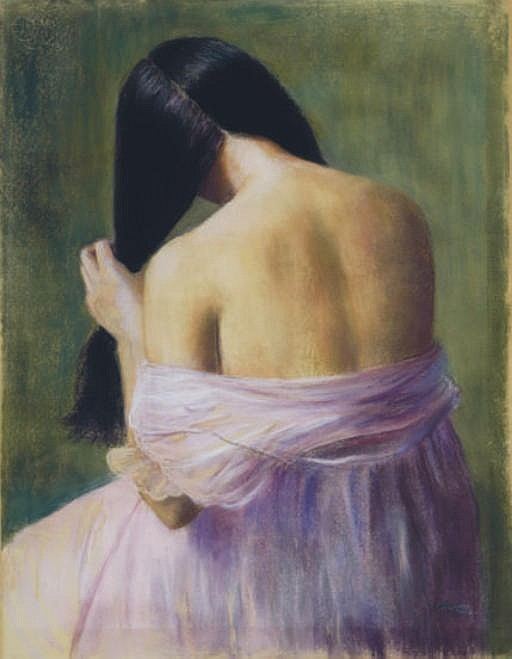
1901–1921: Early life - New York, Canada & San Francisco
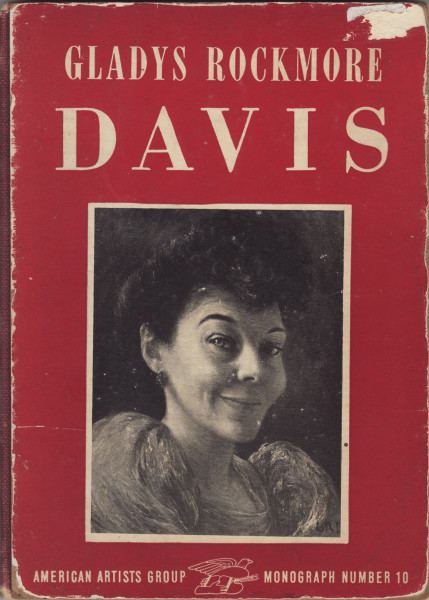
Born in New York City, on May 11, 1901, the daughter of 'David William Rockmore' and Jeanette (Richman) Rockmore, Gladys Davis lived in New York until she was nine years old. Her father, a lawyer and metallurgist, moved the family to Canada shortly after he was suspended from his New York legal practice for 6 months for “inappropriately reflecting on the character of a New York Municipal Court Justice”. Gladys and her brother, Julian Rockmore, spent the next five years getting used to new schools as the family moved from place to place in Canada.
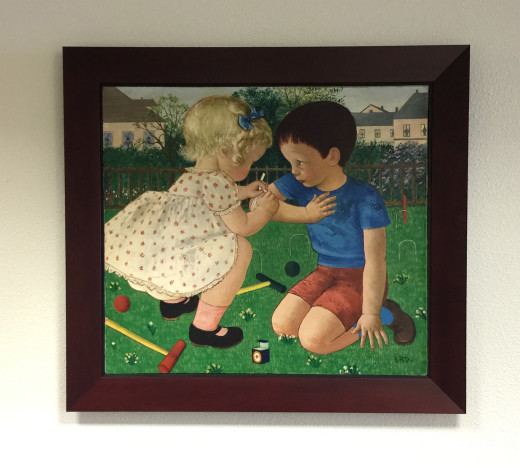
”I spent the following five years getting used to one school, only to find myself moved on to another. This successive uprooting did not stop me from giving every moment of my spare time to drawing and painting. We finally returned to the United States and landed in San Francisco.” Although neither of her parents had any artistic inclinations, they encouraged her and sent her to Saturday classes at the California School of Fine Arts.
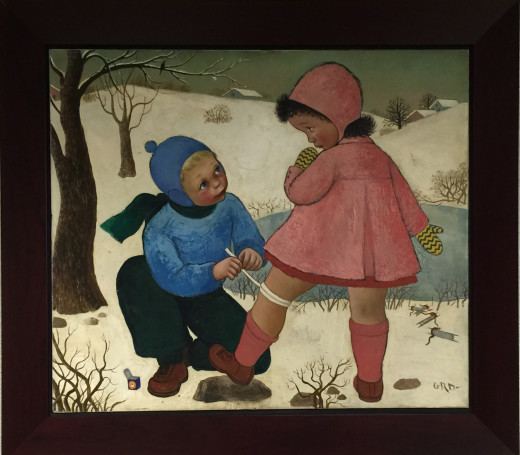
“Of this period, I have fascinating memories of the caverns below the school which were the ruins of the original building destroyed in the great earthquake. It was in San Francisco that I first studied from life, and won my first prize. After two years, the family moved again and we finally settled in Chicago. It was there that I got my real start in the world of art.”
1917–1925: Education & Career Beginnings - Chicago
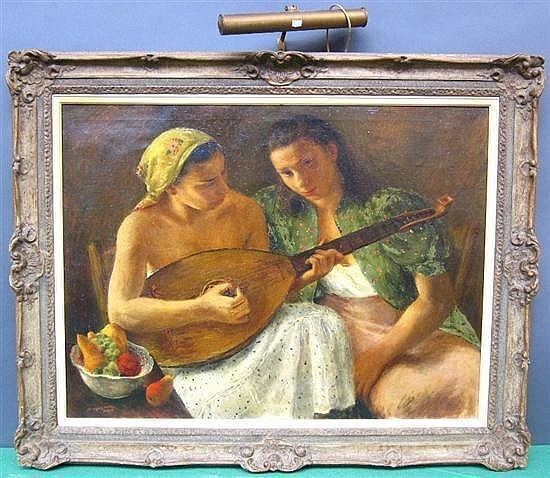
At the age of sixteen, she entered the Art Institute of Chicago where she studied with John Norton and George Bellows. She spoke affectionately of Norton who "taught me to look, to see, really to use my eyes. He showed me the vast difference between the actual distortion of reality and the 'pretty' distortion of the average point of view." She praised the Art Institute of Chicago, not only for its teaching, but also for having a museum where the students could compare their work with the works of masters. "Great paintings put us in our places," she said. “As I look back, I realize that a truly remarkable spirit existed in the school at that time. That’s what happens when there are both good teachers and eager students.”

“After graduating in 1920, I was faced with the necessity of earning a living. Commercial art seemed to be the answer. I spent the next eleven years as an advertising and fashion artist. This proved to be not only remunerative, but a most instructive experience in many ways. Actually, it taught me much in the way of judgment, discipline, and facility.”
Gladys Rockmore’s artwork appeared in several major fashion catalogs over the next few years including Marshall Fields and Vogue. She was recognized as a fine artist and often did the front or back cover. She was then hired at Grauman Brothers Advertising in Chicago. She was the first woman ever hired by the firm in a staff of all men.
Gladys Rockmore met Floyd Davis who was the top artist at Grauman's for illustrations and commercial work. They began a secret relationship and eventual courtship. As soon as Gladys entered the studio Floyd's output dwindled, and as the weeks went by, became practically non-existent. At the end of two months the management asked her to leave; she and Davis subsequently married.
1925–1936: Marriage, children & a career – New York, France
In 1925, Davis left the studio and became a freelance advertising artist. After their marriage, the couple moved to New York where Floyd, dividing his time between advertising and magazine illustration, soon became top man in both fields. Then, art editors had to compete with art directors of advertising agencies for his drawings.
“I was married in 1925, to Floyd Davis, who, at that time was already a well-known artist. His unfailing interest and flawless taste have been a continuous source of inspiration to me. We moved to New York and set up house-keeping in the old Sherwood Studios. On December 15, 1928 and February 1, 1930 respectively, Noel Montgomery Davis and Deborah Davis, our son and daughter made their appearance.”
"In 1932 (at the height of the Great Depression), we decided to go abroad for a year. So, having unlimited optimism, and the fearlessness of youth, we packed up bag, baggage, nurse and babies and departed. We finally settled down in Cannes, for a period of about six months. Our house was only a short distance from the house in Le Cannet where Renoir spent the last twenty-five years of his life.”
“We returned after a year to New York, and to my astonishment I discovered that I had completely lost the knack of turning out commercial work. I floundered for a couple of months and then went back to school. I studied at the Art Students League for a few months, then later spent some time working with George Grosz, whose intelligent interest was most helpful. After this period, I threw away all leading strings, and plunged myself into the exciting world of painting.“
Mrs. Davis always set out to paint the things with which she was familiar. Her two children, Noel and Deborah, posed for many paintings from their babyhood through their youth.
1937–1947: Recognized artist/WWII artist – New York, Europe
Recognition came soon. Gladys Rockmore Davis won the William R. French Gold Medal at the Art Institute of Chicago in 1937 and was recommended for the 1938 purchase prize by the Virginia Museum of Fine Arts at Richmond, Virginia. In 1939 she received honorable mention from the Pennsylvania Academy of Fine Arts, and third honorable mention from the Corcoran Gallery of Art, Washington, D.C. The Metropolitan Museum of Art in New York bought her August Afternoon in 1940. This was followed by a number of prizes in museums throughout the country, and in 1941 she gave her first one-man show at the Rehn Gallery in New York City. After two additional one-man shows at the Midtown Gallery in New York an art critic called Gladys Rockmore Davis "the ten-year wonder of United States art".
Her work was described by a critic of the Art Digest (May 1, 1943) as that of "one of our strongest women artists, who is not so much concerned with fantasy as she is with painting a good solid, professional picture". Her first book, Pastel Painting was published in 1943. At the Metropolitan Opera House in 1944, Mrs. Davis made many intimate sketches of the ballet from backstage and other studies in the dressing rooms for Life magazine.
During World War II, her ballet sketches were exhibited in Bonwit Teller store windows while she worked inside sketching ballerinas and giving her pictures away for the purchase of $100 war bonds. She received a citation from the United States Government in 1945 in recognition of this service.
Mrs. Davis and her husband were commissioned by Life to paint liberated Paris in 1944 and 1945 where she narrowly escaped death in a German strafing of Metz. Floyd Davis concentrated on the wartime city with American soldiers, while she painted the familiar and nostalgic scenes. Reviewing the show, which was exhibited in the foyer of the Time-Life Building in 1945, a critic from the New York World-Telegram commented, "This was an uncertain, frightened city Gladys Rockmore Davis was painting.“ Their 44 works from World War II are now a part of The US Army Center of Military History(link) in Washington D.C.
Mrs. Davis was one of the artists participating in the first art show sponsored by the Encyclopædia Britannica in 1945; in the same year she won the Pepsi-Cola Portrait of America Show popular prize. Her second book, Gladys Rockmore Davis, was published in 1945 by American Artist Group.
Her work was also on the cover of Art News and the Life Christmas Issue in 1947. Her artwork was converted to a wearable silk by The Onondaga Silk Company and collected and displayed by the Cleveland Museum of Art in 1947.
1947–1958: Commercial artist – New York
In the late 1940s Gladys Rockmore Davis became a featured artist for commercial advertisements for major companies including Upjohn, Munsingwear, Elgin Watches, and Johnson & Johnson for whom she produced a series of ads that were also available as prints.
In 1951, Mrs. Davis won the Gold Medal from the Pennsylvania Academy of Fine Arts. She was a full Academician at the National Academy of Design. When Mrs. Davis visited Spain in 1952 she was stimulated to new work, which resulted a one-man show held in April 1953, called "Paintings of Spain." She also produced a series of portraits of both children and adults during this time. One of those portraits was of her famous cousin by marriage, Clara Rockmore, who used that portrait as the cover for her Art of the Theremin album in 1977. In 1953, Gladys once again made the cover of American Artist with a charcoal of her new “back view” series.
In 1955, she wins the National Academy of Design Isador Gold Medal for her figure, back view, “White Petticoat.”
By 1956, her son, Noel Davis had come to the attention of the New York art world and is considered a rising young star winning many awards and critical acclaims.
In November 1956, after a visit to the Orient, Gladys Rockmore Davis has a show at the Midtown Gallery featuring her impressions of Balinese Dancers. In July 1957, Gladys is recognized for donating her artwork for the 1957 Holiday Card of the United Nations Children's Fund. In 1958, she has her final show at the Babcock Gallery featuring her pastels of flowers.
1959–1967: Final chapter – New York
Gladys Rockmore Davis continued to paint during the final decade of her life. She served as a judge for shows and closely follows the career of her son who legally changed his name in 1959 from Noel Davis to Noel Rockmore. Her works continued to appear in major print media as illustrations for stories. Her husband Floyd Davis, retired from illustration and was one of the first members inducted into The Illustrators Hall of Fame (external link). Gladys Rockmore Davis died at the French Hospital in New York City on February 16, 1967 with both of her children in town to be with her.
